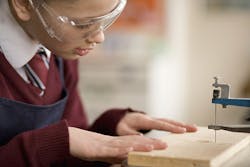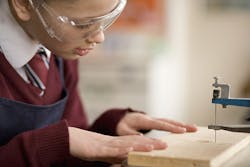Science and Art, Two Worlds Apart
In the United States, the recent presidential debates covered topics like healthcare, retirement, education, and military involvement on foreign soil. While the economy seems to be the underlying tone or root cause of many of today’s problems, I wonder what will happen in the bigger picture over time. If those who are more educated are doing better than those who aren’t, why is college still such a cost-prohibitive investment or so difficult to obtain? Even if you look at our bloated, broken education system for younger Americans (high school and lower), it seems that, while we are spending more money, we are cutting programs like shop class and music.
People complain that the classroom hasn’t changed in over 100 years. Meanwhile, inner-city schools obtain new smart projection screens that cost thousands of dollars. Perhaps more interesting are the schools that use an abacus to teach students, who end up outperforming most students around the world. Technology is only successful when applied correctly. So where does technology fit in schools? Perhaps in the machine shops and art programs that many schools are cutting.
As a carpenter-turned-engineer, I have used about all of the math I learned in high school in tinkering and building. As I started engineering school, I realized that I didn’t have to tinker or guess as much if I used higher levels of math. School formats do not need to change the blackboard or desks. They need to change the mind.
With young students teeming with energy, we need programs like shop and art. Even if these programs are still in the curriculum, they often fail to demonstrate the science behind, say, the frequency of music, the material science of art class, or the trigonometry of shop. Imagine how much math and science you could teach young students in a wood shop with a few hand tools. After a semester, they might understand math better. In addition, students would inherently learn about jointing, adhesives, art, and be able to show off their actions with tangible goods. Instead of sitting in desks and chairs to learn, students should build the desks and chairs.
The question, “why do I need to know this?” would not come up if students learned through hands-on application. Whether it be music, art, or shop, students could learn to answer their own questions through tinkering. We can’t solve problems in any industry unless we first teach the next generation how to be problem solvers. We can’t build a future if the next generation doesn’t know how to build. Education and technology are not talking points, they are answers to the problem of history repeating itself.


